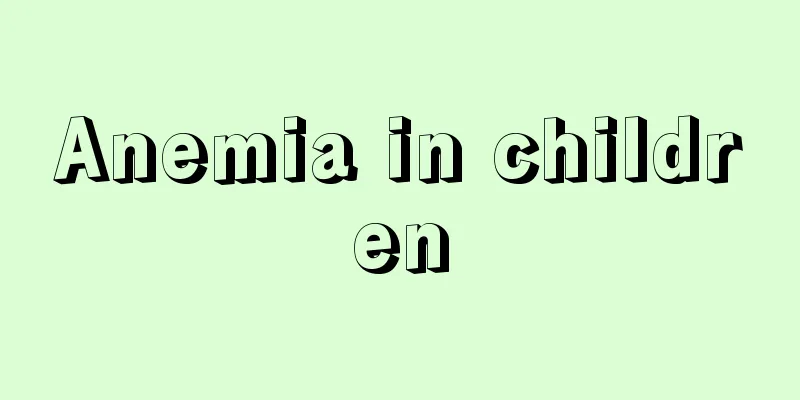Anemia in children

|
Anemia is a disease that occurs in the human body. This disease occurs mostly because the quantity or ratio of a certain element in the human body does not meet the standard. This disease can be cured, and there is a certain degree range for this disease, such as mild, moderate and severe. Children can also suffer from anemia, but many people don’t know. So what is the degree of anemia in children? Anemia in children is divided into four degrees: mild, moderate, severe, and very severe according to the amount of hemoglobin and red blood cell count in peripheral blood. According to the mean corpuscular volume (MCV), mean corpuscular hemoglobin (MCH) and mean corpuscular hemoglobin concentration (MCHC), anemia is divided into four categories: macrocytic anemia, normocytic anemia, microcytic anemia and microcytic hypochromic anemia. According to the cause of the disease, anemia is divided into three categories: hemorrhagic, hemolytic and underproduction. According to the World Health Organization's diagnostic criteria for anemia in children: 6 months to less than 5 years old, hemoglobin <110g/L is anemia. 5 to 11 years old, hemoglobin <115g/L, which is anemia. 12 to 14 years old, hemoglobin <120g/L is anemia. In addition, the my country Pediatric Hematology Conference (1998) recommended: In the neonatal period, hemoglobin <145g/L is considered anemia. From January to April, hemoglobin is less than 90g/L, which is anemia. From April to June, hemoglobin is less than 100g/L, which is anemia. The severity of anemia in children is as follows: Mild anemia: hemoglobin < normal lower limit ~90g/L. Moderate anemia: hemoglobin <90g/L~60g/L. Severe anemia: hemoglobin <60g/L~30g/L. Extreme anemia: hemoglobin <30g/L. The severity of anemia in newborns : Mild anemia: hemoglobin 120g/L~144g/L. Moderate anemia: hemoglobin <120g/L~90g/L. Severe anemia: hemoglobin <90g/L~60g/L. Extreme anemia: hemoglobin <60g/L. Prevention: 1. Nutritional iron deficiency anemia: The main thing is to do a good job in health education. Parents should be aware of the harmfulness of this disease to children and the importance of prevention. Specific measures should include health guidance for pregnant mothers, proper feeding of children after birth, emphasis on timely addition of complementary foods rich in iron, especially animal foods such as various red meats, liver, etc., treatment of digestive system diseases, malnutrition and infectious diseases, early administration of iron supplements for premature infants and twins, and attention to the supply of nutrients for children in the recovery period of the disease. |
<<: What to do if your baby has flatulence and constipation
>>: Will a scratch on a child's face leave a scar?
Recommend
What is the reason why children sweat easily?
Sweating is very common in both adults and childr...
Be careful of these effects and contraindications when using moxibustion on babies
Moxibustion is a Chinese medicine therapy techniq...
Breastfeeding causes smelly farts but no poop
Breastfed babies often do not poop for several da...
How to treat stomach heat in children
What we often call stomach heat is actually stoma...
What are the dangers of severe constipation in children?
Every parent hopes that their children can always...
Can I swim after getting the vaccination?
Every baby will get vaccinations after birth to p...
What to do if a newborn baby has eczema on his neck
For many people, eczema is a common skin disease ...
What to do if your child has rotten teeth
For children, tooth decay is a very common occurr...
My baby's face is red and hot. What's the problem?
One side of the baby's face is always very re...
What to do if blisters appear on the soles of babies' feet
Babies grow up under the care of their parents si...
What to do if your child is very stubborn? Solve the mother's troubles
Children in today's families are usually spoi...
Baby nasal congestion and runny nose
Nasal congestion and runny nose are actually one ...
Baby's lower teeth cover the upper
Many parents find that their baby's teeth are...
What should I do if my child is hyperactive?
Some people think that children are naturally mor...
What to do if your baby has a runny nose and difficulty breathing
We all know that babies often have a runny nose w...









